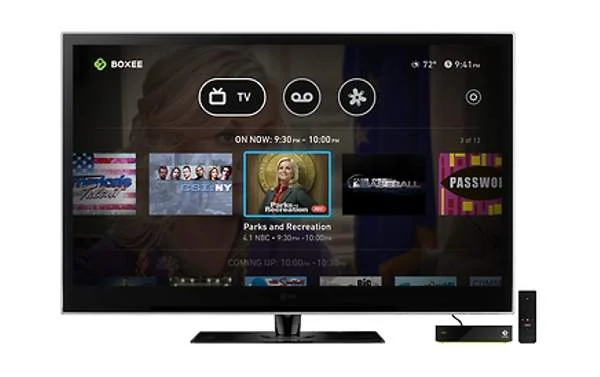Boxee TV is slated to make its premiere appearance at Wal-Mart stores across the country tomorrow for $99.
Boxee’s set-top box will compete with a number of similar devices this holiday season, including Apple and Roku. All three industry heavyweights are attempting to lure users interested in viewing web-based content – such as YouTube videos, Netflix and Hulu – on their TV screens.

”It’s going to be a big launch for us. There’s a big difference between having your product being carried by retailers, where it sits on the shelf, and getting real marketing behind it,” Boxee CEO Avner Ronen told Bloomberg.
“You turn on the TV, and it’s a familiar ground. We don’t believe the future of the TV is going to be a future filled with apps. When you turn on the TV, you don’t want 60 icons. You just want to watch something.”
According to IHS analyst Jordan Selburn, Boxee managed to sell 120,000 of its devices last year, while Roku offloaded 1.4 million. As expected, Cupertino is the clear winner, as it shipped 5.3 million Apple TV devices over the past 12 months.

”Consumers haven’t flocked to these devices because they don’t have many of the shows offered on cable networks. That’s not expected to change any time soon as broadcasters and pay-TV operators look to protect their lucrative businesses,” Selburn explained. ”The content owners are just far too reluctant to support streaming or downloaded access to their content.”
In related news, ABI Research has confirmed that Netflix currently leads the OTT (Over-The-Top Content) market in the United States. Indeed, Amazon and Apple captured the overall second and third positions in the US OTT vendor matrix – although Netflix scored highest on both implementation and innovation while Amazon and iTunes occupied the second and third positions (Apple edging Amazon for implementation and Amazon ahead for innovation).
“In addition to market share, device reach to mobile devices weighed heavily in both the implementation and innovation scores. Apple’s iTunes scored well for its ability to leverage the cohesive Apple ecosystem,” ABI Research analyst Michael Inouye explained.
“While Microsoft’s Xbox Zune video service did not place well in this analysis, the platform overall best depicts the growing importance of the hybridization between OTT and pay-TV services, making Xbox Live a platform to keep an eye on. Many of these elements were also true for the multiscreen analysis where operators like Cablevision scored lower in part due to device support and lack of differentiators.”
Meanwhile, ABI Research analyst Sam Rosen noted that once viewed as a key element to cutting the cord, pay-TV operators are now expected to launch new OTT services to target lower price points as well as customers beyond their geographical footprint.
”Early hybrid offerings include early work from Synacor and Charter Communications that allows consumers to search for content from the pay-TV operator and key OTT providers from the same portal… [Users] simply want access to content, regardless of who is providing it, so innovative solutions like this will help the OTT market and bring additional exposure to the multiscreen market, which is still in its early stages,” he added.






